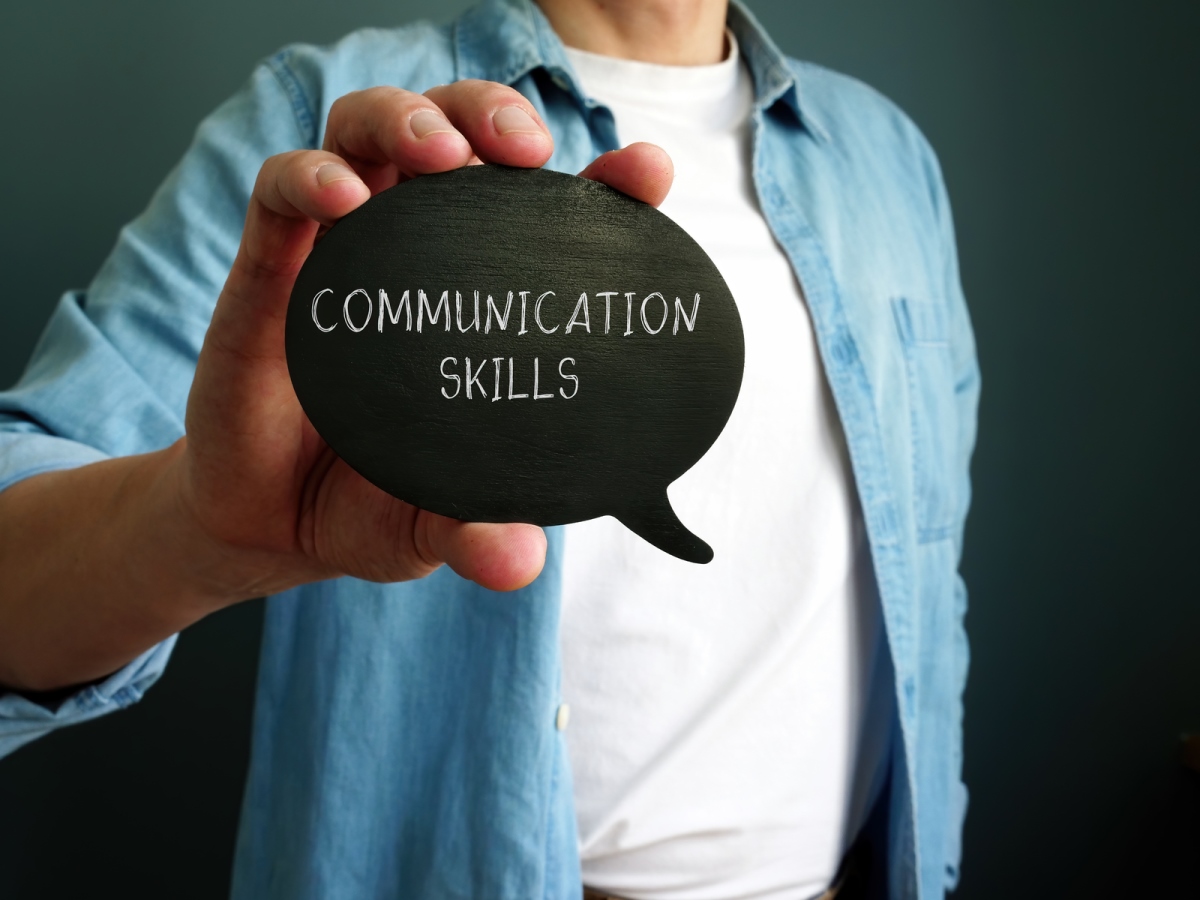You’ve been avoiding a colleague for weeks. Dodging calls, texts and calendar invites. It’s been quite easy because your office is large and flexible working means you don’t regularly share the same space and therefore don’t bump into each other. What had occurred between you and your colleague in a recent meeting was more than a disagreement. At the time you were angry at what had been said, it was hurtful and wrong. Despite your colleagues’ best efforts, you have been avoiding any semblance of a resolution. If you were face to face, there would be no hiding your annoyance but these days you’re online, so at the first sign of this person, you turn your camera off and recede into the ether, bitter and avoidant.
In many cases conflict is easy to avoid. Flexible working arrangements and technology allows us to hide our faces and become almost invisible if we choose. We can exit a meeting without leaving our seats, we can also tune in and mentally check out. It’s easy to avoid resolving conflict, this does however come at a cost.
- Conflict if left unresolved tends to fester and worsen as time goes on. Particularly if the conflict is personal. It can do irreparable damage to a relationship and inevitably impact individual and team productivity. In essence, conflict costs time, money, energy and effort.
- It’s not uncommon to have individuals and even teams bury their heads in the sand when it comes to conflict. Perhaps thinking that if enough time passes, the things said and done will just go away. Conflict is always laden with emotion and feeling that unfortunately can’t be wished away with the passing of time. Human beings hold onto emotion. It doesn’t simply go away, and therefore needs to be resolved.
- Resolving conflict is a learned behaviour. We may prefer to wait to discuss tough issues until everyone is in person. Now more than ever, that may not be an option. So, don’t shy away from resolve conflicts.
Many people don’t want to manage conflict in a workplace because they feel unequipped to have difficult conversations. Those conversations that stir up emotions and require self-reflection. Conflict management in a workplace is rarely easy. Having a robust framework and process to follow will ease these concerns and enable you to navigate difficult conversations with ease. What every workplace should be working towards is building confidence in their employees to prevent and navigate conflict effectively.
Where to begin
Before we engage in resolving any conflict, we first need to understand what it is and what causes it. It’s not uncommon to disagree with others. But what separates disagreement from conflict? It’s simple. The answer is emotion. A disagreement becomes conflict when raw emotion is involved. When two people disagree, and emotion is attached it causes conflict.
It becomes incredibly useful to identify the two parts of conflict. Firstly, that there is an emotional component and secondly that there is one or more key issues or problems to resolve. Once we’re aware or the two parts, we can tackle these components separately and begin the resolution process.
Consider someone who you are in long term conflict with? Maybe with someone from around the office, a colleague or senior. I’m talking about someone that you dislike for no apparent reason. The conflict exists between you, but you don’t know why? Maybe, you suspect that they harbour negative emotions about you? Perhaps the conflict is vocal, and you frequently engage in petty irritations with this person – or one of you intentionally ignores the other. In any event, you may be scratching your head trying to decipher how you arrived at such a tense state of affairs. It’s likely that don’t even care. You feel justified in their point of view about this person. Let’s unravel how things got to this state.
So, what happened? Perhaps this can be answered by considering the many assumptions we make about others. We all do it on any number of topics – we automatically fill in the gaps if we don’t have sufficient information. The trouble is, sometimes we’re not aware that we are making assumptions. Our brains will automatically bridge gaps and create ‘logical’ conclusions. Assumptions can easily complicate our relationships. They have the capacity to lead to misunderstanding, miscommunication and at times, conflict.
We need to reconsider what has happened, what has led us to this point. One of the biggest challenges we face when it comes to conflict is only seeing things from our own point of view.
How to reconsider
Firstly, three steps in a reconsideration:
- Data
- Emotion
- Test the assumption
Let’s begin with the data we have been exposed to. That is, what we’ve seen and heard. For example, my boss cut me off in a meeting (data). Reconsidering what has happened from your and their perspective will assist you in identifying any missed observations and will enable you to apply some objectivity to what you have observed.
Then we need to label the emotion that we are feeling in response to that data. I was offended and angry (emotions). Being able to name the emotion means we can manage it more strategically and deliberately in the course of our conflict resolution conversation.
Lastly, we need to ask ourselves, ‘What am I assuming here?’. It may be the case that you’re assuming that your boss was out to embarrass you. But perhaps your boss has cut you off because they have more information that you’re unaware of. Pause, and fight the urge to assume the negative. Consider why else your boss might have cut you off.
Resolving conflict on the workplace is very much a process and the first step in the process is to understand where the conflict has arisen from. It’s usually a simple misunderstanding that grows out of control.
Avoiding Escalation
The last thing we want to do when we’re trying to understand and resolve conflict is to exacerbate it. In other words, we don’t want to make things worse. Part of doing this means that we need to create a safe environment both face to face and online. Any good face to face and digital conflict resolution training will coach its participants on how to create safety in conversation. Doing this enables the conflict to be resolved more easily. Whenever we engage with the individual or group, we are in conflict with we should stick to third party neutral language. ensures we don’t escalate the situation.
Strategies for Preventing Conflict
We need to actively manage ourselves to prevent conflict from occurring. Why? When it comes to conflict, often our assumptions get the better of us. As human beings we have tendency to see ourselves in a positive light and others in a negative light. Often, we assume things about others. These assumptions aren’t always accurate. If these assumptions continue unchecked, then they can result in misunderstanding and potentially lead to conflict.
Some strategies to consider include
- Consider points of view other than your own
- Ask for reasoning, don’t assume you know what others mean
- Engage in active listening and active speaking to avoid miscommunication.
Engage in Effective Communication
One of the largest contributors to conflict in the workplace is miscommunication. If we engage in effective communication, we reduce the capacity for misunderstanding and therefore the conflict that may ensue.
It’s important that you collaborate with our team and collectively define expectations around communication. A great place to start is establishing protocols for interactive listening and interactive speaking. We want to ensure that we are present when wea are listening and speaking. If we’re speaking, we want to have guidelines to ensure what we are saying it what is received. If we are listening, we want to ensure what and what we are hearing is what was intended
The Conversation
We want to ensure we have prepared before we initiate the conversation. After engaging in detailed preparation, we want to begin by framing the conversation. This is essentially how to begin the conversation. Begin by using with neutral language you may consider the following.
- Describe the topic in a neutral way (“Today I’d like to talk with you about…”)
- Explore both perspectives (“I want to learn…”)
- Find a mutually agreeable outcome (“in order to achieve…”)
Using inclusive, non-accusatory language will only assist you in navigating conflict. In approaching the conversation in this fashion, we are setting up the conflict conversation for resolution compared to escalation. The aim here is to not blame but highlight that both parties need to together navigate a way forward.
Strategies for Handling & Resolving Conflicts with Team
One of the most effective ways to manage conflict and promote corporate conflict resolution is to engage in training to resolve conflict. Providing individuals with the essential tools to prevent and reduce conflict as it arises is imperative for every workplace. There are a multitude of training providers that offer training to solve conflict in a company.
As listed above we want to start by acknowledging the emotional dimension that exists in all conflict. Provide the opportunity for all team’s members to be heard and acknowledge what they have observed and how it makes them feel. We want to identify the emotions. Simply genuinely listening to each individual will allow you to hear the different points of view and perhaps see more clearly what has caused this conflict and how it has escalated.
We want to encourage each team member to become more present. Becoming more present in the moment and engaging in some mindfulness practices is a great way to have team members develop self- awareness.
Please be mindful that you will need a well-defined rigorous process or framework to follow to effectively resolve conflict within a team. If you don’t have a framework or process you may consider the use of a mediator. An impartial third party like a mediator can provide guidance and navigates the conflict resolution process for you. Depending on how deeply rooted the conflict is within the team and how equipped you feel about navigating this process, the use of a mediator. may be more appropriate.
What happens if it gets heated?
It’s important to know when it’s time to walk away from a conversation. If we or our counterpart become emotionally triggered, our ability to listen and ritualise become compromised. At this point we are at risk of the conflict escalating, which is never a good thing. If at any moment you feel triggered or noticed that your counterpart is triggered step away from the conversation. It usually take about 20 minutes or so for us to calm down and regain the ability to rationally view a situation.
Conclusion
Humans are complicated and complex beings. We’re aware that conflict drains us of energy, inspiration, time and money. Yet, we continue engage in conflict leave it unresolved. We feel hurt and hold grudges. We’d rather ignore conflict rather than resolve it. More often than not conflict is left to fester. It not only impacts our relationships in the workplace but often directly impacts out productivity and connectedness to a team. These feelings often bleed into our personal lives.
Rather than leaving conflict to negatively impact our days we need to resolve it. Resolving conflict in the workplace will improve ongoing relationships, increase productivity and ensure a harmonious culture. We need to work towards building a culture than not only prevents conflict from arises but acknowledges it presence and navigates it effectively.
















